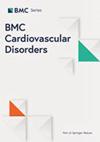摘要
背景:心力衰竭(HF)影响着美国近 600 万人,预计到 2030 年将增加 46%,给医疗保健带来巨大负担。预测模型,尤其是基于机器学习(ML)的模型,为识别不良后果(如死亡率和再入院率)风险较高的患者提供了有前景的解决方案。本综述旨在评估机器学习模型在预测心房颤动相关预后方面的有效性,重点关注其在改善患者护理和临床决策方面的潜力。我们旨在评估机器学习模型如何有效预测心衰患者的死亡率和再入院率,从而改善临床预后:本研究遵循 PRISMA 2020 指南,并在 PROSPERO 数据库(CRD42023481167)中注册。我们使用与心衰、机器学习、死亡率和再入院相关的特定关键词,在 PubMed、Scopus 和 Web of Science 数据库中进行了系统检索。提取的数据主要集中在研究特点、机器学习细节和结果上,AUC 或 c-index 作为主要结果用于汇总分析。PROBAST工具用于评估偏倚风险,根据参与者、预测因素、结果和统计分析对模型进行评估。荟萃分析汇集了预测死亡率和再入院率的不同机器学习模型的AUC。预测准确性数据按时间段分类,高异质性由I²值超过50%决定,适用时采用随机效应模型。使用 Egger 检验和 Begg 检验对发表偏倚进行评估,P 值低于 0.05 即为显著结果:共确定了 4,505 项研究,经过筛选,64 项纳入最终分析,涵盖 943,941 名患者。其中,40 项研究关注死亡率,17 项研究关注再入院率,7 项研究同时关注两种结果。共有 346 个机器学习模型接受了评估,其中最常见的算法是随机森林、逻辑回归和梯度提升。在死亡率预测方面,神经网络模型的总体AUC最高(0.808),而支持向量机在再入院预测方面表现最佳(AUC为0.733)。分析表明存在重大的偏倚风险,主要原因是依赖回顾性数据和样本量不足:总之,本综述强调了 ML 模型在预测高血压再入院和死亡率方面的巨大潜力。ML 算法在提高预后准确性和实现个性化患者护理方面大有可为。然而,模型的可解释性、通用性和临床整合等挑战依然存在。要克服这些挑战,需要完善的 ML 技术和健全的监管框架,以提高心房颤动的预后。Background: Heart failure (HF) impacts nearly 6 million individuals in the U.S., with a projected 46% increase by 2030, is creating significant healthcare burdens. Predictive models, particularly machine learning (ML)-based models, offer promising solutions to identify patients at greater risk of adverse outcomes, such as mortality and hospital readmission. This review aims to assess the effectiveness of ML models in predicting HF-related outcomes, with a focus on their potential to improve patient care and clinical decision-making. We aim to assess how effectively machine learning models predict mortality and readmission in heart failure patients to improve clinical outcomes.
Method: The study followed PRISMA 2020 guidelines and was registered in the PROSPERO database (CRD42023481167). We conducted a systematic search in PubMed, Scopus, and Web of Science databases using specific keywords related to heart failure, machine learning, mortality and readmission. Extracted data focused on study characteristics, machine learning details, and outcomes, with AUC or c-index used as the primary outcomes for pooling analysis. The PROBAST tool was used to assess bias risk, evaluating models based on participants, predictors, outcomes, and statistical analysis. The meta-analysis pooled AUCs for different machine learning models predicting mortality and readmission. Prediction accuracy data was categorized by timeframes, with high heterogeneity determined by an I² value above 50%, leading to a random-effects model when applicable. Publication bias was assessed using Egger's and Begg's tests, with a p-value below 0.05 considered significant RESULT: A total of 4,505 studies were identified, and after screening, 64 were included in the final analysis, covering 943,941 patients. Of these, 40 studies focused on mortality, 17 on readmission, and 7 on both outcomes. In total, 346 machine learning models were evaluated, with the most common algorithms being random forest, logistic regression, and gradient boosting. The neural network model achieved the highest overall AUC for mortality prediction (0.808), while the support vector machine performed best for readmission prediction (AUC 0.733). The analysis revealed a significant risk of bias, primarily due to reliance on retrospective data and inadequate sample size justification.
Conclusion: In conclusion, this review emphasizes the strong potential of ML models in predicting HF readmission and mortality. ML algorithms show promise in improving prognostic accuracy and enabling personalized patient care. However, challenges like model interpretability, generalizability, and clinical integration persist. Overcoming these requires refined ML techniques and a robust regulatory framework to enhance HF outcomes.

 求助内容:
求助内容: 应助结果提醒方式:
应助结果提醒方式:


